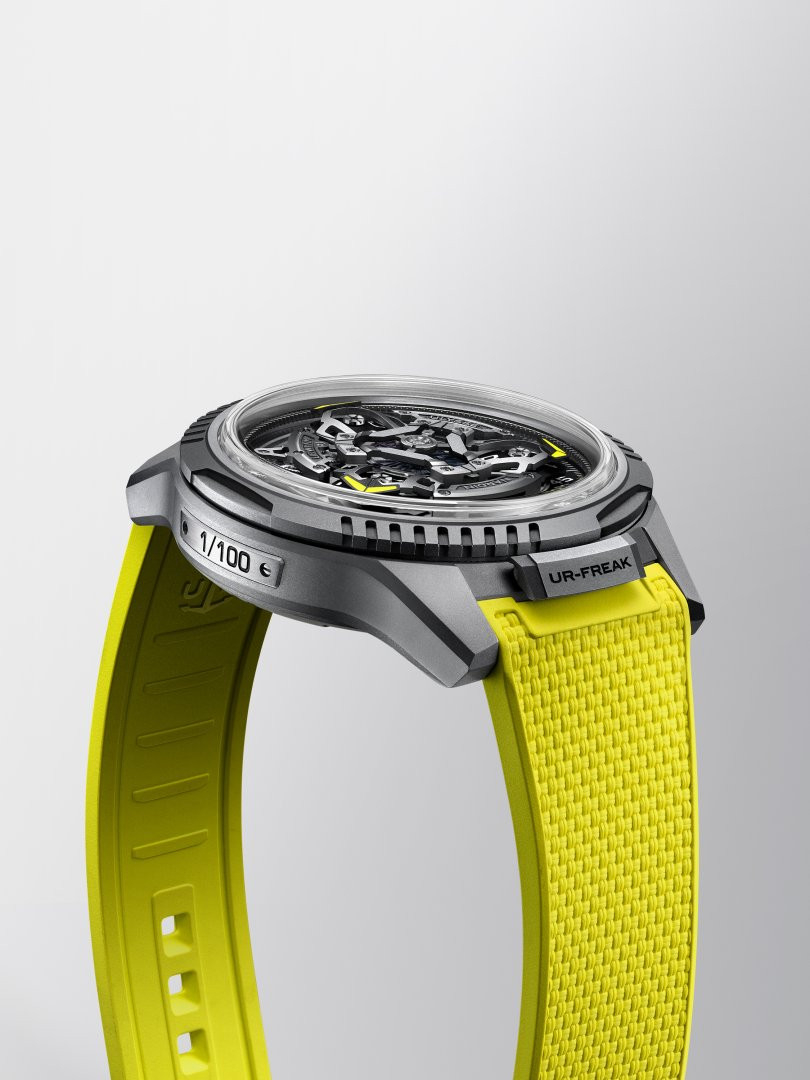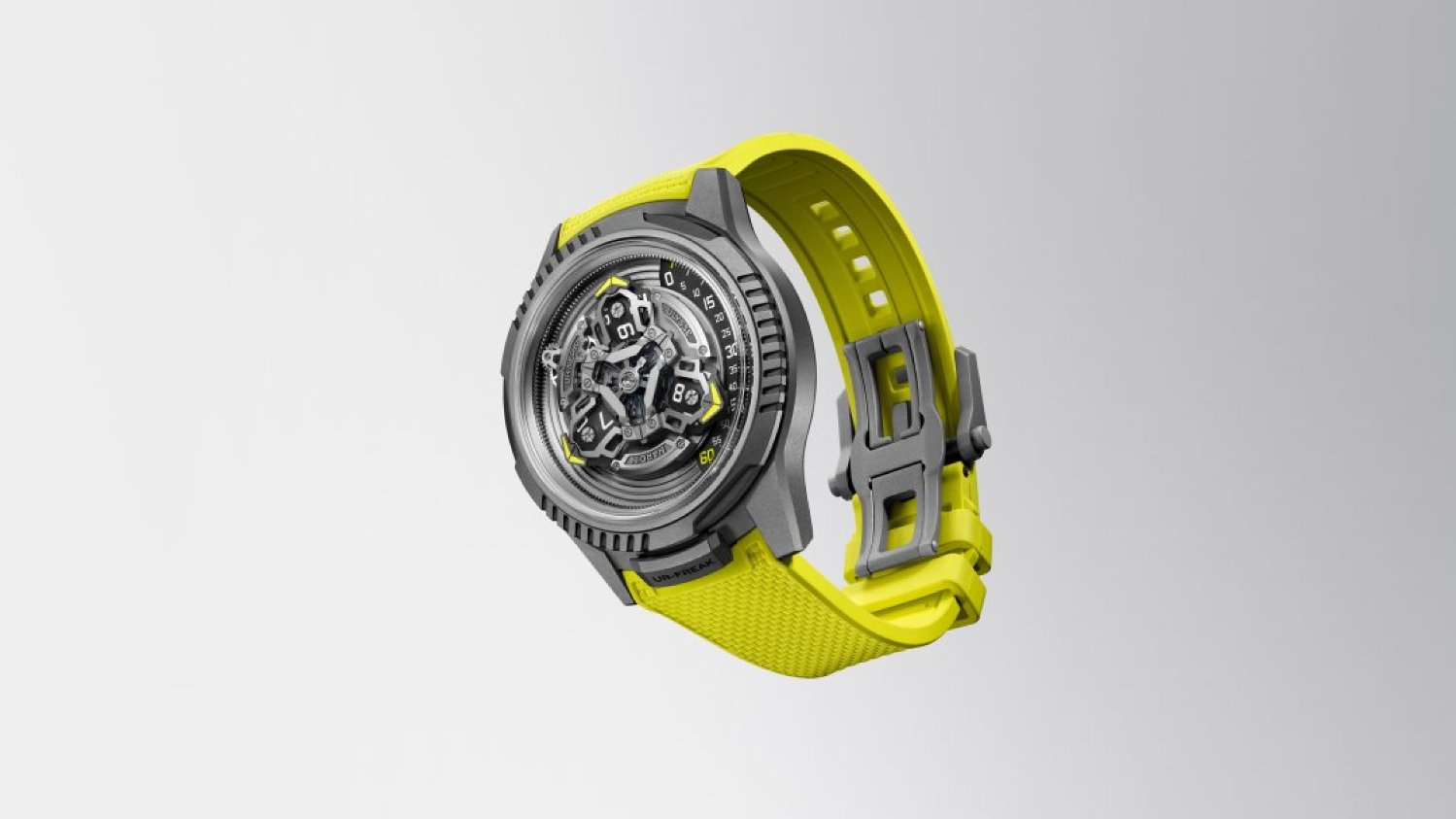Urwerk and Ulysse Nardin have long defined independence as the freedom to design systems internally rather than follow external trends. Their first collaboration formalises this shared philosophy, resulting in a new mechanical architecture that merges two of contemporary watchmaking’s most influential concepts: the Ulysse Nardin Freak and Urwerk’s satellite display.

The result is a timepiece with a fully integrated, co-developed movement that brings together the Freak’s rotating movement architecture and Urwerk’s wandering hours satellite system – UR-Freak. Both brands built a new calibre from the ground up, requiring the creation of more than 150 new components. The collaborative model indicates time through three connected hands mounted on a carousel. Each hand carries a domed disc that displays the jumping hour. As the active hand travels along the 60-minute scale on the right side of the dial, the system switches to the next hour disc once the minute track is complete. The next hand then begins its path from the start of the scale. The entire satellite system is mechanically linked to the regulating organ — a signature of the Freak watches. A silicon balance wheel, oscillator, and escapement sit at the centre of the display and rotate with the carousel, completing one full rotation every three hours. This continual change of orientation reduces rate deviation in the same way as a tourbillon or carousel.

The case is based on the 44 mm Ulysse Nardin Freak ONE platform, executed here in Urwerk’s sandblasted gray anthracite titanium. Urwekr adds its own structural language, including three fluted sections on the rotating bezel and caseback. Accents in electric yellow (Pantone 395 C) highlight key functional elements: the satellite pointers, minute track markers, and the custom rubber strap. True to the Freak concept, the UR-FREAK has no crown. Time-setting is performed through the rotating bezel, secured by a “locker” tab at 6 o’clock. Lifting the locker releases the bezel, allowing the user to adjust the hands. Winding is automatic through Ulysse Nardin’s Grinder® system, though the movement can also be manually wound via the caseback. Despite the sliding-bezel interface, the case maintains 30 metres of water resistance.
At the heart of the watch is the new in-house Ulysse Nardin calibre UN-241, derived from the GPHG-winning UN-240 but rebuilt to integrate the wandering hours display. The movement runs at 3Hz and stores a 90-hour power reserve. The oscillator is 25% larger than previous silicon units and is placed centrally above the rotating satellite system — a layout enabled by developing the movement and dial simultaneously rather than sequentially.
The escapement incorporates DIAMonSil, Ulysse Nardin’s proprietary diamond-coated silicon. This material increases durability by reinforcing silicon’s brittle edges, allowing the escapement to withstand continuous impact and friction. Ulysse Nardin remains the only manufacturer capable of producing DIAMonSil components.
This collaboration demonstrates how independent brands can combine internal expertise to create new mechanical formats. It will be interesting to see if this becomes a trend and brings more maisons together to create even more unique timepieces.
Images: Courtesy Brand






